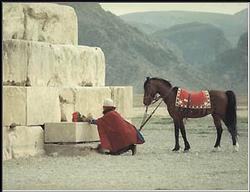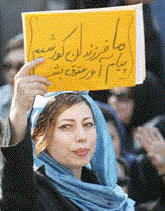Mardaviz Zeyari - True Iranian National Hero

Source: Dr. Nushiravan Kaihanizadeh
In
the year 931 Mardaviz-e-Zeyari, a great Iranian patriot, a revolutionary
leader and a Persian renaissance man entered the central city of Esfahan after
he drove out the Abbasid’s army from the central part of Iran; Kashan,
Hamadan and Esfahan.
On his arrival into Esfahan, Mardaviz asked the
Iranian people to help revive the Persian Empire with all its traditions and
culture, greatness, splendor, brightness and glories.
“My final destination is to see a new Persian
Empire where it’s people live with freedom, happiness and will speak Persian
again”, he said in front of his armed men and Esfahanis citizens.
“I defeated the caliphate army on the Azar-Ruz (9th
day of 9th month of the Iranian year which is November 29), the birth of light
and warmth (fire), a lucky day for Iranians”, he added. “Nobody will be
punished except the traitors to the motherland here in after”, he said,
”We will observe the Persian national festivals as our fathers did for
centuries”. “We celebrate Jashn-e-Sadeh in mid winter this year with
grandeur and magnificence as a mark of remembrance of good thoughts, good
words and good deeds”, he said.
Mardaviz from Daylaman (Northern Iran) named Esfahan
his capital city as did Shah Abbas, seven centuries later on November 12, 1598
AD.
Mardaviz was murdered four years later, in 935 AD in
Esfahan by his non-Iranian servants, then his followers, the Buyids, completed
his patriotic mission.
Mardaviz was the founder of the Zeyarid dynasty that
ruled mostly Mazandaran and Gorgan, from 927 to 1090 AD. Keikavoos, the last
ruler of this dynasty was also a prose writer, the author of the famous
Qabus-Nameh. The Zeyarids were distinguished patrons of the arts. Abu Rayham
Biruni, the famous Persian scholar and scientist lived for several years at
the court of Qabus, the son of Voshmguir, one of the Zeyarids rulers who built
himself a tomb, the Gonbad-e-Qabus which remains one of Iran’s finest
monuments located in the north of Iran near the Caspian sea.
The ninth century witnessed the emergence of more
pure Iranian ruling dynasties and the revival of the Persian language and
literature. Three Persian dynasties were ruling Iran simultaneously, the
Samanids in the northeast; the Saffarids in the southeast and south and the
Zeyarids in the north, west and central part of Iran. Historians called them
“Iranian intermezzo (short movements)” and finally in the end, family
quarrels weakened them.
Dorood to Mardaviz Zeyari, true Iranian national hero!
14 Centuries of occupation and destruction by Mullah Taziz must come to end this year!
It is time for Iranians
to unite and free Iran
Time for Iranian to
be true Iranian!

